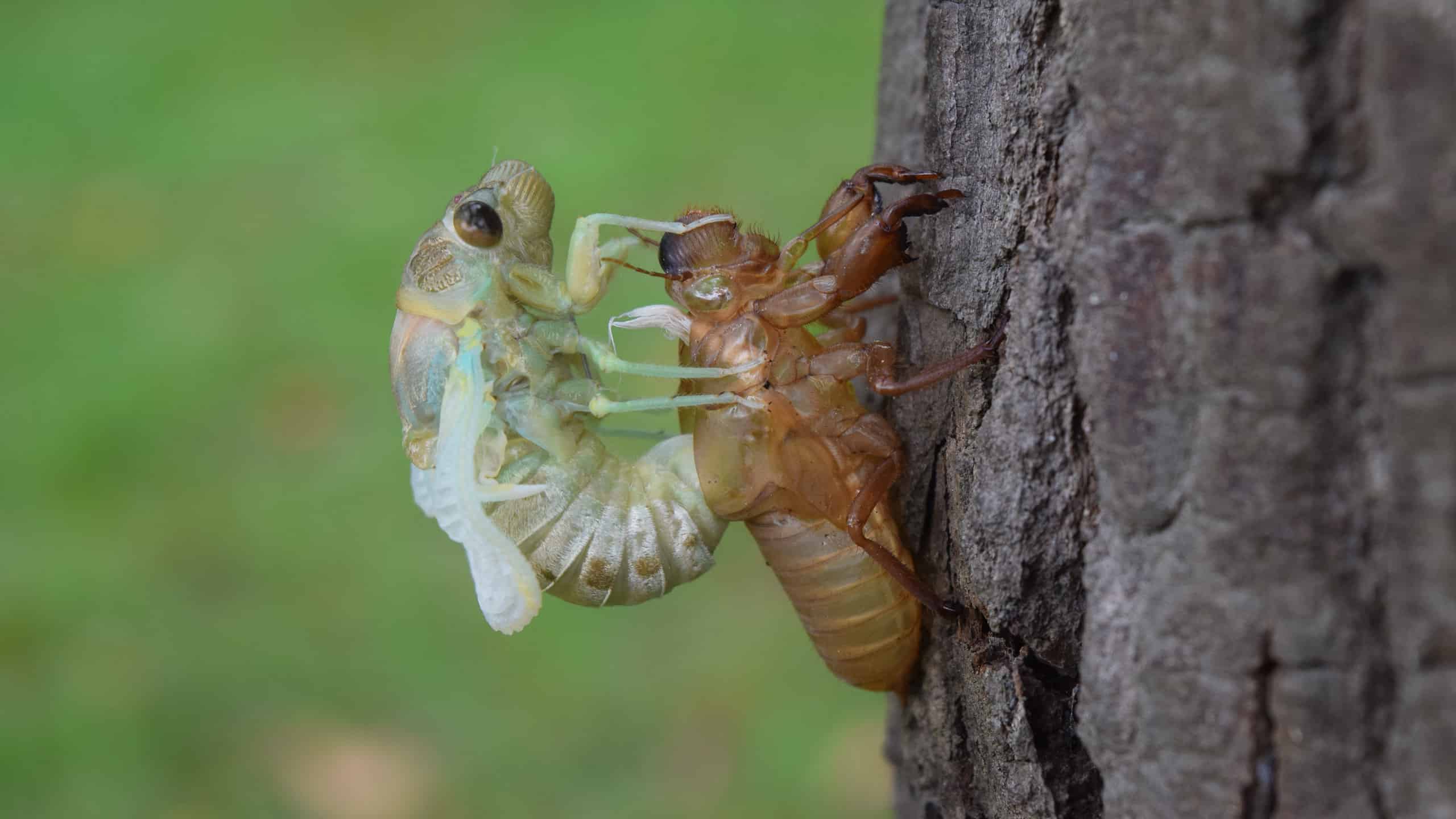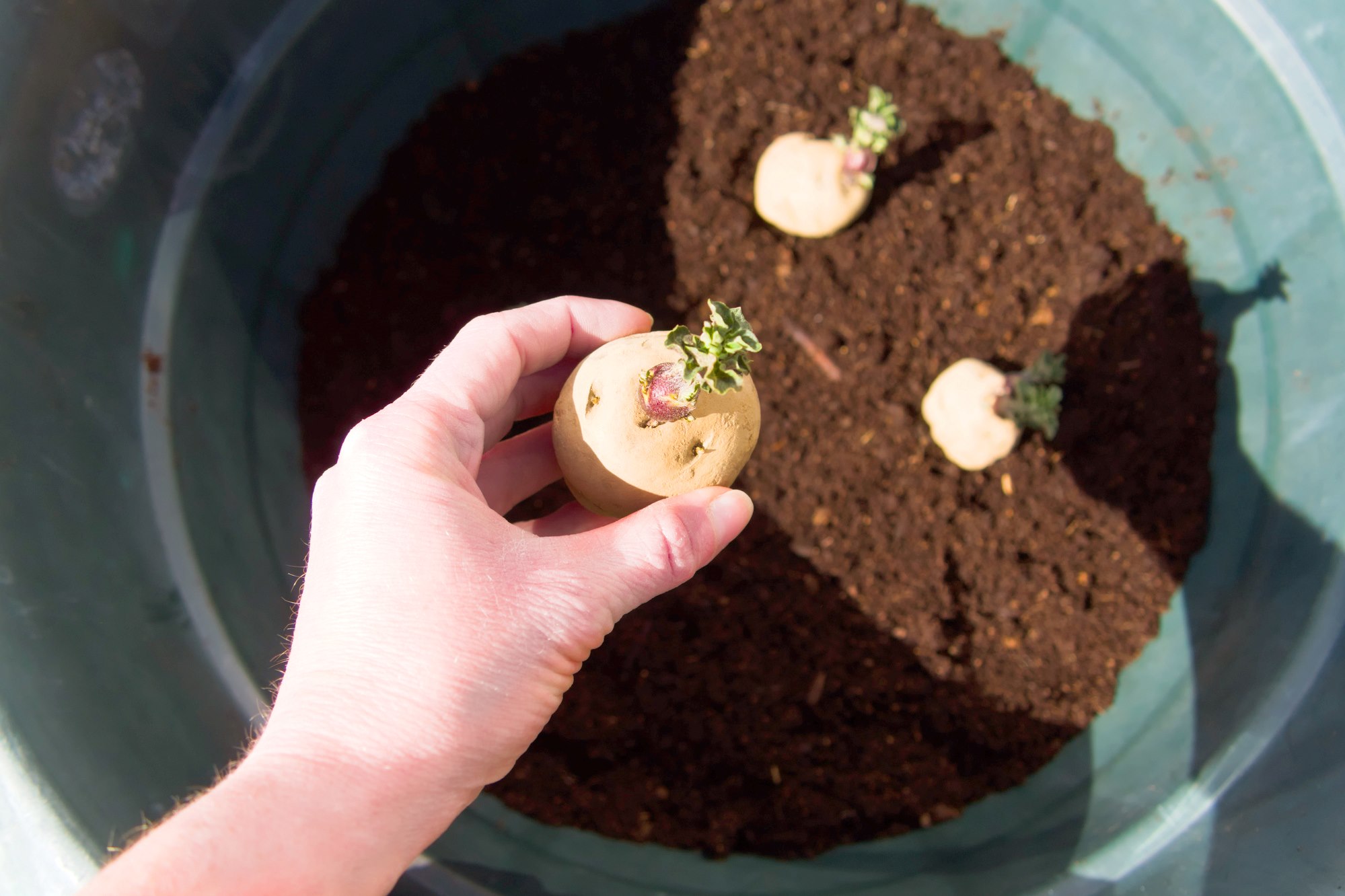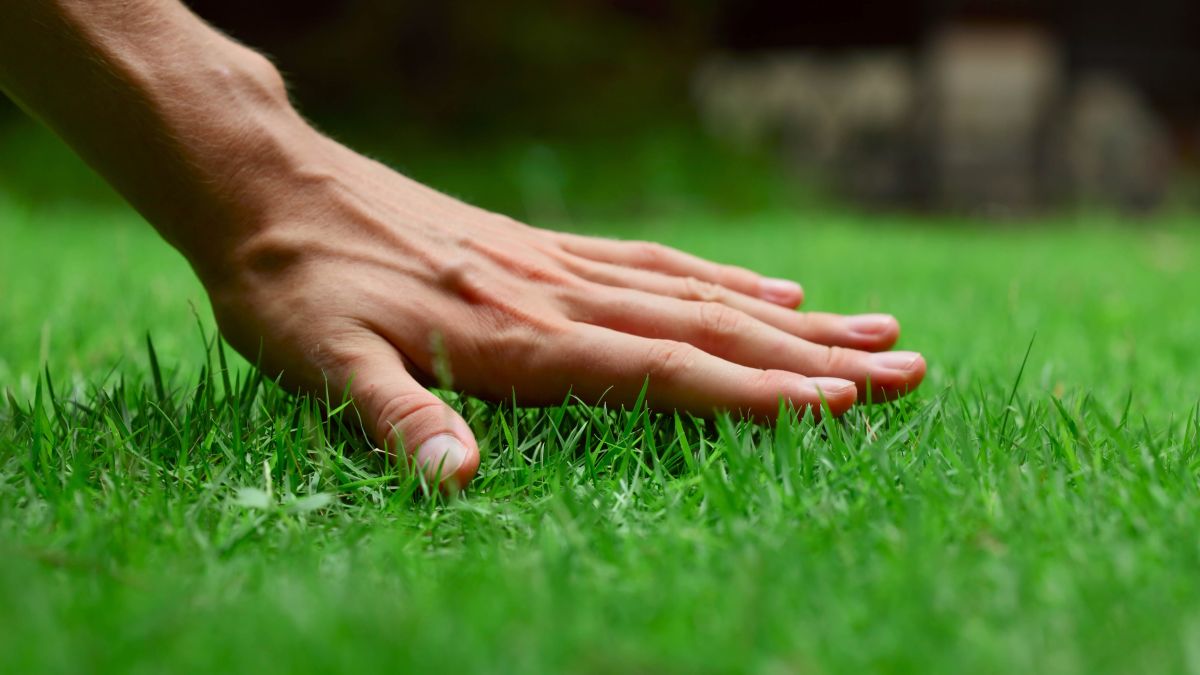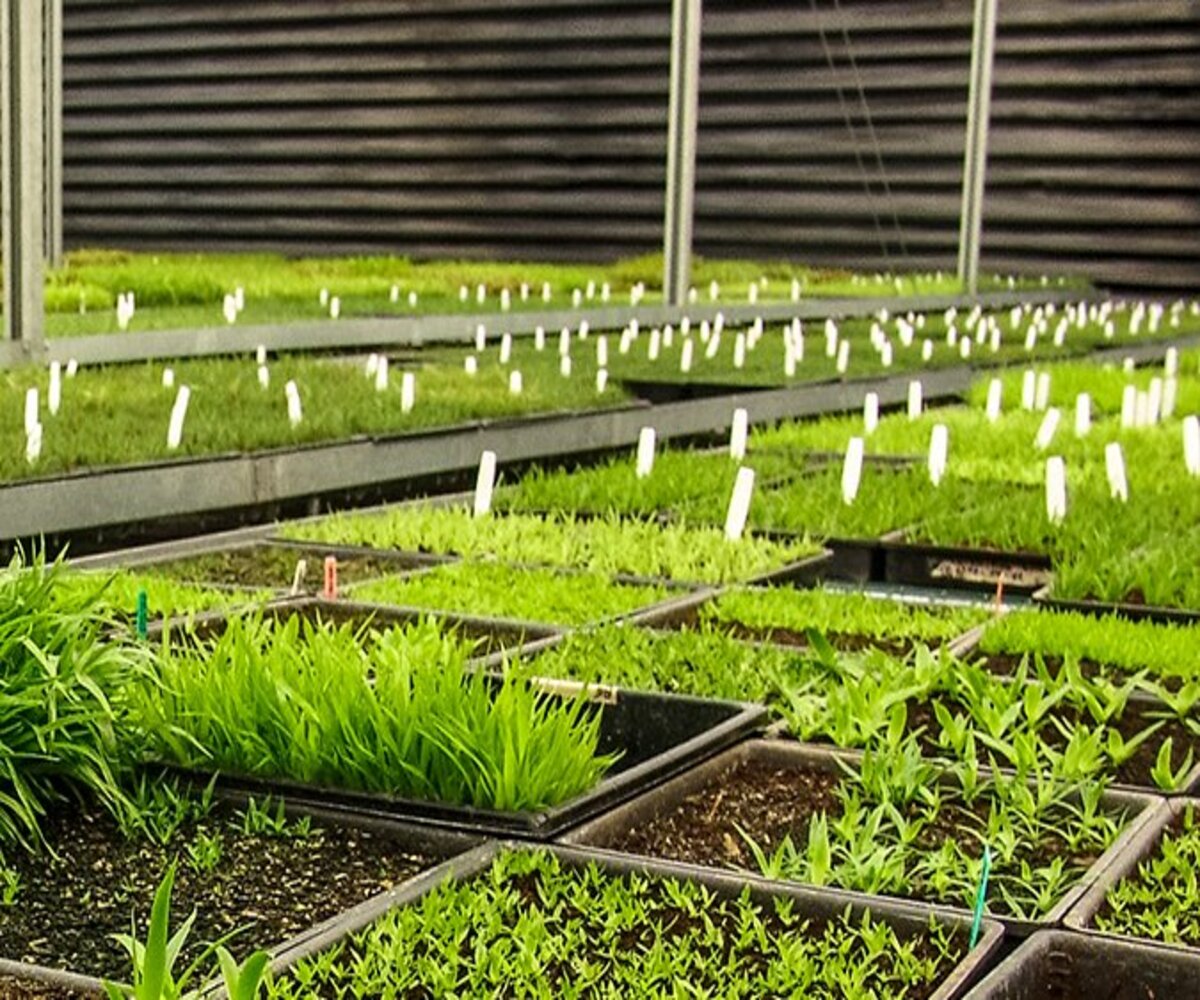Home>Gardening News and Trends>Latest News>What Makes Up The Exoskeleton Of Insects


Latest News
What Makes Up The Exoskeleton Of Insects
Modified: January 22, 2024
Discover the latest news on what makes up the exoskeleton of insects. Explore the fascinating world of insect anatomy and learn about the intricate structures that provide protection and support.
(Many of the links in this article redirect to a specific reviewed product. Your purchase of these products through affiliate links helps to generate commission for Chicagolandgardening.com, at no extra cost. Learn more)
Table of Contents
Introduction
The exoskeleton is a remarkable feature that distinguishes insects from other organisms. It serves as a protective covering, a support system, and even plays a role in sensory functions. Understanding the composition and structure of the exoskeleton is crucial in comprehending the remarkable capabilities of insects.
The exoskeleton of insects is commonly referred to as the cuticle. It acts as a physical barrier, shielding insects from the external environment and preventing water loss. Moreover, it provides structural support, enabling insects to move and maintain their shape. The exoskeleton also serves as a sensory organ, housing mechanoreceptors and chemoreceptors that allow insects to detect their surroundings.
The cuticle is composed of a complex arrangement of components, including chitin, proteins, and other organic compounds. These components work together to create a strong and flexible structure that can withstand various environmental pressures.
Throughout this article, we will delve into the fascinating world of the insect exoskeleton, exploring its composition, structure, and functions. By gaining a deeper understanding of the exoskeleton, we can appreciate the remarkable adaptability and resilience of these extraordinary creatures.
Cuticle Structure
The cuticle of insects is a multi-layered structure that provides both strength and flexibility. It consists of several distinct layers, each with its own unique composition and function.
The outermost layer of the cuticle is known as the epicuticle. This thin layer acts as a waterproof barrier, preventing excessive water loss and protecting the insect from environmental factors such as desiccation and pathogens. The epicuticle is composed of lipids and waxes, which give insects their characteristic glossy appearance. Additionally, it contains small hairs and structures called sensilla, which play a crucial role in sensory perception.
Beneath the epicuticle lies the procuticle, which comprises the majority of the cuticle’s thickness. The procuticle is further divided into two layers: the endocuticle and the exocuticle. The endocuticle is the innermost layer, closest to the insect’s body, and is responsible for providing structural support. It is primarily composed of chitin, a tough polysaccharide polymer, which is discussed in more detail later in this article. The exocuticle, on the other hand, is the outer layer of the procuticle and is more rigid and heavily sclerotized. It provides strength and protection to the insect’s body.
The cuticle structure is not uniform throughout the insect’s body. In areas that require more flexibility, such as joints and wings, the cuticle is thinner and more elastic. In contrast, areas that require rigidity, such as the exoskeleton of the thorax and abdomen, have a thicker and more sclerotized cuticle.
The intricate structure of the cuticle allows insects to adapt to their specific needs. For example, the flexibility of the cuticle in the wing joints allows insects to have precise control over their flight movements, while the rigid exoskeleton of the head protects delicate sensory organs.
Understanding the structure of the cuticle is essential to appreciate the remarkable capabilities of insects. It is through this intricate organization that insects are able to survive and thrive in diverse environments.
Composition of the Exoskeleton
The exoskeleton of insects is composed of a complex arrangement of substances that work together to create a strong and versatile structure. The main components of the exoskeleton are chitin and proteins, with other organic compounds also playing a role.
Chitin is a polysaccharide polymer that serves as the primary building block of the insect’s exoskeleton. It is a tough, fibrous substance that provides strength and rigidity to the cuticle. Chitin is composed of repeating units of N-acetylglucosamine, a sugar molecule, which are linked together in long chains. These chains form bundles called microfibrils, which are arranged in a crystalline structure to further enhance the exoskeleton’s strength.
Proteins are another essential component of the exoskeleton. They are interspersed within the chitin matrix and provide additional structural support. These proteins, known as cuticular proteins, have diverse functions and are involved in various processes, including sclerotization and maintaining the integrity of the cuticle. Some cuticular proteins also play a role in coloration and pattern formation, giving insects their distinctive appearances.
In addition to chitin and proteins, the exoskeleton also contains other organic compounds such as lipids and pigments. Lipids, especially those found in the epicuticle, provide waterproofing properties, preventing excessive water loss from the insect’s body. Pigments are responsible for the vibrant colors and patterns seen on the exoskeleton, serving purposes such as camouflage, mate attraction, or warning signals.
The composition of the exoskeleton can vary between different insect species and even within different body parts of the same insect. For example, the thickness and sclerotization of the cuticle can differ based on the specific needs of each body segment. Insects that require mobility, such as winged species, tend to have a thinner and more flexible cuticle, whereas those with a defensive or protective function, like beetles with hardened elytra, have a thicker and more rigid cuticle.
Overall, the composition of the exoskeleton is a complex combination of chitin, proteins, lipids, and pigments. The interaction of these components results in the diverse and remarkable characteristics observed in insects’ exoskeletons, allowing them to adapt and thrive in their environments.
Chitin
Chitin is a vital component of the exoskeleton in insects, as well as in other arthropods such as crustaceans and spiders. It is a strong and flexible polysaccharide polymer that provides structural support and rigidity to the cuticle.
The chitin molecule consists of a repeating unit of N-acetylglucosamine, a sugar molecule. These units are linked together in long chains, forming a linear polymer. The arrangement of these chains results in the formation of bundles called microfibrils. The microfibrils are further organized into a crystalline structure, contributing to the exoskeleton’s strength and integrity.
Chitin is incredibly resilient and serves as an excellent defense against predators, physical stress, and environmental factors. Its strength allows insects to withstand mechanical pressures, such as impacts or bending, without damaging their exoskeletons. Additionally, chitin is highly resistant to abrasion, providing long-lasting protection to the insect’s body.
Although chitin is highly resistant, it is not completely inflexible. The presence of microfibrils and their arrangement within the chitin matrix allows for some degree of elasticity. This flexibility is crucial for insects during movements, such as flying or bending their joints, as it prevents the exoskeleton from becoming brittle and prone to fractures.
Chitin also plays a significant role in the growth and development of insects. As insects grow, they need to molt and shed their old exoskeletons to accommodate their increasing size. During this process, a new exoskeleton is formed through the deposition of chitin. Chitin synthesis and remodeling are tightly regulated processes, ensuring that the exoskeleton remains strong and functional throughout the insect’s lifecycle.
In addition to its structural role, chitin has other important functions in insects. It is involved in various physiological processes, such as immune response and defense against pathogens. Chitin can stimulate the production of antimicrobial peptides, which help insects combat infections. Moreover, chitin is recognized by certain receptors in the insect’s body, triggering immune responses to fight off potential threats.
The unique properties of chitin make it a crucial component of the insect exoskeleton. Its strength, flexibility, and versatility contribute to the remarkable survival and adaptability of insects in various habitats and ecological niches.
Sclerotization Process
The sclerotization process is a crucial step in the development of the insect exoskeleton, where it undergoes a series of chemical changes to become hardened and durable. The process involves the formation of chemical bonds, cross-linkages, and the deposition of additional substances that increase the rigidity and strength of the cuticle.
The main driver of sclerotization is the enzyme called phenoloxidase. It catalyzes the oxidation of phenolic compounds, such as quinones or catechols, which are abundant in the insect’s body. This oxidation process leads to the formation of reactive intermediates, which then react with proteins and chitin in the exoskeleton.
One of the products of the sclerotization process is melanin, a dark pigment that contributes to the coloration of the cuticle. In addition to its coloration role, melanin also plays a role in the hardening of the cuticle. It is deposited in specific areas of the exoskeleton, creating a dense network of insoluble polymers that increase its strength and resistance to physical stress.
Another important component formed during sclerotization is cross-linkages between proteins. These cross-linkages occur between the amino acids present in cuticular proteins, creating stable bonds that enhance the structural integrity of the exoskeleton. The formation of these bonds helps to stabilize the chitin-protein matrix, making the cuticle more rigid and resistant to deformation.
The sclerotization process is regulated by various factors, including hormonal control and environmental cues. Hormones, such as ecdysone and juvenile hormone, play a significant role in coordinating the timing and extent of sclerotization during each molt. Environmental factors, such as temperature and humidity, can also influence the rate and degree of sclerotization.
It is important to note that not all parts of the insect exoskeleton undergo the same degree of sclerotization. Areas that require greater flexibility, such as joints and appendages, tend to have a lower degree of sclerotization. In contrast, regions that require rigidity, like the head capsule or the elytra in beetles, undergo a more extensive sclerotization process to provide enhanced protection and support.
The sclerotization process is crucial for the development of a functional and resilient exoskeleton in insects. It ensures that the cuticle can withstand physical stress, protect against predators, and maintain the structural integrity necessary for various locomotor activities.
Structural Components
The exoskeleton of insects is composed of several structural components that work together to provide strength, flexibility, and protection. These components include the epicuticle, procuticle, endocuticle, and exocuticle.
The epicuticle is the outermost layer of the cuticle and serves as a protective barrier. It is composed of a thin, lipid-rich layer that prevents excessive water loss and shields the insect from pathogens and environmental factors. The epicuticle also contains small hairs, called setae, which play a role in sensory perception.
Beneath the epicuticle lies the procuticle, which is the main bulk of the cuticle. The procuticle is divided into three layers: the endocuticle, exocuticle, and mesocuticle (present in certain insects). These layers differ in composition and function.
The endocuticle is the innermost layer of the procuticle and is primarily composed of chitin fibers. It is responsible for providing structural support and flexibility to the exoskeleton. The endocuticle is more flexible and less sclerotized compared to the other layers, allowing for movement and growth during molting.
The exocuticle is the outer layer of the procuticle and is heavily sclerotized. It contains a higher concentration of proteins and is responsible for providing rigidity and protection to the insect’s body. The exocuticle is often dense and resilient, with a varying degree of pigmentation depending on the species, contributing to the insect’s coloration and patterning.
In certain insects, an additional layer called the mesocuticle is present between the endocuticle and exocuticle. The mesocuticle shares characteristics of both the endocuticle and exocuticle, providing intermediate flexibility and strength.
Together, these structural components of the exoskeleton allow insects to maintain their shape, withstand external pressures, and perform various locomotor activities. The flexibility of the endocuticle and the rigidity of the exocuticle provide a balance between mobility and protection.
It is important to note that the composition and arrangement of these structural components can vary among different insect species and even within different body parts of the same insect. This variability allows insects to adapt to their specific ecological requirements and perform specialized functions.
Epicuticle
The epicuticle is the outermost layer of the insect exoskeleton, serving as a protective barrier between the insect’s body and the external environment. This thin layer plays a crucial role in preventing excessive water loss, shielding against pathogens, and participating in sensory functions.
The epicuticle is primarily composed of lipids and waxes, which provide its waterproofing properties. These lipids form a thin film on the surface of the exoskeleton, reducing the permeability to water and preventing desiccation. The lipids also act as a defense mechanism against parasites and pathogens, forming a physical barrier that prevents their entry into the insect’s body.
In addition to its protective function, the epicuticle contains small hair-like structures called sensilla. Sensilla are sensory organs that house various types of receptors, allowing insects to perceive their environment. These receptors can detect a wide range of stimuli, including mechanical pressure, temperature changes, humidity levels, and chemical signals.
The sensilla present in the epicuticle allow insects to navigate their surroundings, find food sources, and locate potential mates. They play a crucial role in vital behaviors such as feeding, reproduction, and evading predators. The sensitivity and diversity of sensilla vary among different species of insects, reflecting their specific ecological adaptations.
Furthermore, the epicuticle also contributes to various coloration patterns seen in insects. Pigments may be stored within its structure, giving insects their vibrant and diverse colors. This coloration can serve a range of functions, including sexual attraction, predator deterrence, or species recognition.
The epicuticle is dynamic and can undergo changes in response to environmental stimuli. For example, in certain species, the epicuticle can modify its thickness and composition to adapt to changes in temperature or humidity. This flexibility allows insects to better regulate their internal environment and survive in different ecological conditions.
Overall, the epicuticle plays a crucial role in protecting and preserving the insect’s body. Its waterproofing properties, sensory functions, and contributions to coloration make it an integral component of the exoskeleton. The remarkable adaptability of the epicuticle enables insects to thrive in diverse habitats and maintain their survival in ever-changing environments.
Procuticle
The procuticle is the main bulk of the insect exoskeleton, located beneath the epicuticle. It provides the exoskeleton with its strength, rigidity, and structural integrity. The procuticle is further divided into three layers: the endocuticle, exocuticle, and in some insects, the mesocuticle.
The endocuticle is the innermost layer of the procuticle and is primarily composed of chitin fibers. These chitin fibers are arranged in a network, providing the exoskeleton with flexibility and allowing for growth during molting. The endocuticle is less sclerotized compared to the other layers, making it more susceptible to enzymatic degradation during the molting process.
The exocuticle is the outer layer of the procuticle and is heavily sclerotized. It contains a higher concentration of proteins, which undergo cross-linking to form a rigid structure. This sclerotization process results in the hardening and darkening of the exoskeleton. The exocuticle provides the exoskeleton with its strength and protection, allowing it to withstand mechanical stress and external pressures.
In certain insects, an additional layer called the mesocuticle is present between the endocuticle and exocuticle. The mesocuticle shares characteristics of both the endocuticle and exocuticle, providing intermediate flexibility and strength. It contributes to the overall properties of the exoskeleton, serving as a transition zone between the more flexible internal layers and the hardened outer layer.
The procuticle’s composition and thickness vary among different insect species and body parts. In areas requiring more flexibility, such as joints and appendages, the procuticle is thinner and more flexible, allowing for a greater range of motion. In contrast, body segments that require protection and support, such as the thorax and abdomen, have a thicker and more sclerotized procuticle.
The procuticle undergoes growth and remodeling during each molt, as the old exoskeleton is shed and a new one is formed. The process involves the secretion of a new procuticle layer beneath the old one. The new procuticle gradually hardens and becomes sclerotized, providing the insect with a sturdy exoskeleton that can support its body and facilitate various locomotor activities.
Overall, the procuticle is a vital component of the insect exoskeleton, providing strength, rigidity, and protection. The combination of chitin fibers and protein complexes gives the procuticle its unique mechanical and structural properties, allowing insects to thrive in diverse environments.
Endocuticle
The endocuticle is the innermost layer of the procuticle, situated beneath the exocuticle. It plays a crucial role in providing structural support, flexibility, and growth capabilities to the insect exoskeleton.
The primary component of the endocuticle is chitin, a tough polysaccharide polymer. Chitin fibers are arranged in a network within the endocuticle, creating a flexible and resilient framework. This arrangement allows the endocuticle to withstand mechanical stress and deformation, providing the necessary flexibility for various movements and activities.
The endocuticle also contains specialized proteins that are interspersed among the chitin fibers. These proteins contribute to the mechanical properties of the endocuticle and play a role in its overall functionality. They enhance the strength and durability of the exoskeleton, making it resistant to damage from external forces.
During molting, the endocuticle undergoes remodeling as the old exoskeleton is shed and a new one is formed. The formation of a new endocuticle layer occurs through the deposition of new chitin fibers and proteins. This regrowth allows the insect to accommodate its increasing size and is essential for facilitating the molting process.
The endocuticle’s flexibility is vital for the growth and development of the insect. As the insect grows, the endocuticle expands to accommodate the increase in body size. It also provides the necessary flexibility for jointed appendages, allowing for smooth and coordinated movements.
Furthermore, the arrangement and composition of the endocuticle can adapt to different environmental conditions. For example, in response to changes in temperature or humidity, the endocuticle can alter its thickness and composition, providing the insect with better insulation or water retention capabilities.
The endocuticle interacts closely with the other layers of the procuticle, such as the exocuticle and mesocuticle (if present). This cooperation allows for optimal functionality and balance between flexibility and rigidity throughout the exoskeleton. The endocuticle provides the foundation upon which the more sclerotized layers, such as the exocuticle, can build upon to provide additional strength and protection.
In summary, the endocuticle is a crucial component of the exoskeleton, providing flexibility, growth capabilities, and support for the insect. Its composition of chitin and specialized proteins allows for adaptation to environmental changes and enables the insect to navigate its surroundings with finesse and efficiency.
Exocuticle
The exocuticle is the outer layer of the procuticle, situated above the endocuticle. It is heavily sclerotized and plays a crucial role in providing strength, rigidity, and protection to the insect exoskeleton.
Composed mainly of proteins and chitin, the exocuticle undergoes a process called sclerotization, which involves the cross-linking of proteins and the deposition of substances to harden the cuticle. The sclerotization process results in the formation of stable bonds between protein molecules, increasing the rigidity of the exocuticle.
The overall composition of the exocuticle can vary among different insect species and body parts. In some cases, it may have a higher concentration of proteins compared to chitin, while in others, the reverse might be true. This variability allows the exocuticle to adapt to the specific needs of different body segments, striking a balance between strength and flexibility.
One notable feature of the exocuticle is its thickness. It is typically thicker than the endocuticle and contributes to the overall hardness of the exoskeleton. The thickness of the exocuticle can vary depending on the specific requirements of an insect species, with some having a thin exocuticle and others developing a thicker and more heavily sclerotized layer.
The high level of sclerotization in the exocuticle gives it its dark and often pigmented appearance. The deposition of pigments within the exocuticle not only contributes to the coloration and patterning of the insect, but also adds an extra layer of protection against sunlight, predators, and environmental stressors.
Due to its rigidity and density, the exocuticle provides superior strength and protection to the insect’s body. It acts as a shield, preventing physical damage and shielding the soft tissues beneath from external forces. The exocuticle’s resistance to compression ensures the structural integrity of the exoskeleton, allowing the insect to withstand pressures and impacts.
The exocuticle plays a crucial role in the overall functionality of the insect exoskeleton. It provides support for vital organs, such as the flight muscles, and serves as a site for muscle attachment. Additionally, it helps maintain the structure of other specialized features, such as the elytra in beetles or the hardened forewings in certain insect groups.
In summary, the exocuticle is a key component of the insect exoskeleton, providing strength, rigidity, and protection. Its high degree of sclerotization and thickness contribute to the overall resilience and functionality of the exoskeleton, enabling insects to thrive in their environments and perform various tasks with efficiency and effectiveness.
Functions of the Exoskeleton
The exoskeleton of insects serves a multitude of functions that are crucial to their survival and success in the natural world. From protection to support, sensory functions to growth, the exoskeleton plays a fundamental role in the lives of insects.
1. Protection: One of the primary functions of the exoskeleton is to provide protection to the insect’s body. The rigid and durable structure of the exoskeleton acts as a physical barrier, shielding insects from external threats such as predators, microorganisms, and physical injuries.
2. Support and Movement: The exoskeleton provides structural support and serves as an external skeleton, giving insects their characteristic shape. It acts as an anchor for muscles, enabling coordinated movement and locomotion. The exoskeleton, in conjunction with specialized joint structures, allows insects to perform a wide range of motions including walking, flying, burrowing, and swimming.
3. Sensory Functions: The exoskeleton acts as a sensory organ, housing a variety of structures called sensilla. These sensilla are specialized sensory receptors that allow insects to perceive their environment. They can detect mechanical cues, changes in temperature and humidity, airborne chemicals, and even sound vibrations. The exoskeleton’s integration of sensory receptors enables insects to navigate their surroundings, locate food sources, and communicate with conspecifics.
4. Growth and Development: The exoskeleton plays a vital role in the growth and development of insects. As insects grow, their exoskeleton becomes too restrictive, necessitating molting. During molting, the old exoskeleton is shed, and a new one forms underneath. The exoskeleton provides the support and structure necessary for insects to undergo this process of metamorphosis successfully.
5. Water Regulation: The exoskeleton aids in regulating water balance within the insect’s body. The impermeable epicuticle reduces water loss through evaporation, helping insects to conserve water in arid environments. Additionally, some insects have specialized adaptations in their exoskeleton, such as hydrophobic hairs or specialized structures, to facilitate water movement and absorption.
6. Defense Mechanisms: The exoskeleton can serve as a defense mechanism for insects. Some species have evolved physical adaptations such as spines, thorns, or armor-like structures on their exoskeletons, acting as deterrents against predators. Additionally, the exoskeleton may contain chemical compounds or toxins that are noxious or distasteful to potential predators, providing an additional layer of protection.
The exoskeleton of insects is a remarkable structure that enables these organisms to thrive in a wide range of habitats and ecological niches. Its multifunctional nature, combining strength, protection, sensory perception, and growth support, demonstrates the incredible adaptability and success of insects as a diverse and abundant group of organisms in the natural world.
Protection
Protection is one of the paramount functions served by the exoskeleton of insects. The exoskeleton acts as a physical barrier, shielding them from a myriad of external threats that could potentially harm their delicate internal structures.
The rigid and durable nature of the exoskeleton provides a formidable defense against predators. It acts as a protective armor, preventing direct access to the insect’s body. The exoskeleton’s toughness serves as a deterrent, making it difficult for predators to puncture or damage the insect’s vital organs.
In addition to predatory threats, the exoskeleton also safeguards against environmental risks. It acts as a shield, protecting insects from harsh weather conditions, temperature extremes, and physical injuries. For instance, the exoskeleton shields internal tissues from dehydration and water loss, enabling insects to thrive in arid environments.
Some species have evolved specialized adaptations on their exoskeletons for protection. Examples include spines, thorns, and other protrusions that deter potential predators. These structural adaptations add an extra layer of defense, making it challenging for predators to capture or swallow insects.
Furthermore, the exoskeleton of certain insects has evolved mechanisms to fend off predators through chemical defenses. Some insects possess glands that secrete toxic or distasteful substances on their exoskeleton. These chemicals act as a deterrent, warning predators that the insect is unpalatable or potentially harmful if consumed.
Camouflage is another important aspect of protection facilitated by the exoskeleton. Many insects have evolved coloration patterns and markings on their exoskeletons that merge with their surroundings, making them difficult to detect by both predators and prey. This adaptation allows insects to blend into their environments, reducing the chances of being spotted and attacked.
It is worth noting that while the exoskeleton provides essential protection, it also poses limitations. The rigidity of the exoskeleton can restrict the insect’s movements, making them more vulnerable in certain situations. To overcome this, insects have evolved jointed appendages and flexible body segments that enable them to maneuver and escape potential threats.
In summary, the exoskeleton of insects plays a vital role in providing protection against predators, environmental risks, and physical harm. Its durability, structural adaptations, and chemical defenses serve as an effective defense mechanism, safeguarding the wellbeing and survival of insects in a diverse range of habitats.
Support and Movement
The exoskeleton of insects serves as a vital structural framework, providing support and facilitating various forms of locomotion. It acts as an external skeleton, giving insects their characteristic shape and enabling them to perform a wide range of movements and activities.
The rigid exoskeleton acts as a supportive structure, providing a solid framework for the attachment of muscles. Muscles are attached to the internal surface of the exoskeleton, allowing insects to exert force and generate movement. By contracting their muscles, insects can manipulate their exoskeletal segments, facilitating walking, flying, swimming, and other forms of locomotion.
In addition to support, the exoskeleton contributes to the overall stability of insects. It maintains the integrity of their body shape and structure, preventing collapse or deformation during locomotion. This stability is especially crucial in aerial insects, where maintaining a streamlined body shape is essential for efficient flight.
The exoskeleton, along with specialized joint structures, also allows insects to have precise control over their movements. The segmentation of the exoskeleton provides flexibility at specific regions, enabling insects to bend, rotate, and extend their body segments. This flexibility is particularly important in appendages such as legs and wings, facilitating intricate movements needed for tasks like grasping, climbing, and flying.
The exoskeleton’s mechanical properties, such as its stiffness and resistance to compression, contribute to the support necessary for flight in winged insects. The rigidity of the exoskeleton helps maintain the shape and integrity of the wings, allowing for the generation of lift and the efficient beating of wings during flight. The exoskeleton provides the necessary rigidity and attachment sites for the powerful flight muscles that drive aerial movement.
Moreover, the exoskeleton enables insects to thrive in diverse habitats, including those requiring specialized modes of locomotion. Aquatic insects, for instance, possess exoskeleton modifications that assist in swimming and diving. These adaptations can include streamlined body shapes, flattened appendages, or specialized hairs that facilitate movement through water.
Importantly, the exoskeleton supports the weight of the insect’s body, reducing the necessity for internal support structures. This design allows insects to have a greater proportion of their total body volume dedicated to other essential physiological functions, such as reproduction, digestion, and sensory organs.
In summary, the exoskeleton of insects provides essential support, stability, and mobility. Its rigid structure, combined with specialized joint systems, enables insects to perform a variety of locomotor activities, from walking and climbing to flying and swimming. The exoskeleton’s role in facilitating movement is fundamental to the survival and success of insects in a vast array of ecological niches.
Sensory Functions
The exoskeleton of insects plays a crucial role in their sensory perception and allows them to interact with their environment. It houses specialized structures called sensilla, which are responsible for detecting a wide range of stimuli and play vital roles in various sensory functions.
Sensilla are microscopic sensory organs found on the surface of the exoskeleton and are connected to sensory neurons. They come in various forms and serve different sensory purposes. Mechanoreceptors, for example, detect physical displacement or pressure changes, allowing insects to sense touch or vibrations in their surroundings.
Chemoreceptors are another type of sensilla found on the exoskeleton. They allow insects to detect and respond to chemical signals, such as pheromones released by potential mates or chemical cues indicating food sources or danger. Chemoreception is vital for foraging, reproduction, and avoiding harmful substances.
Thermoreceptors sense changes in temperature, allowing insects to detect heat or cold in their environment. This ability is crucial in regulating their body temperature and guiding behaviors such as seeking warm or cool areas for thermoregulation.
The exoskeleton also houses sensory structures that enable insects to perceive humidity levels and changes in air pressure. These sensory organs help insects navigate their environment and adapt their behavior accordingly.
Furthermore, sensilla on the antennae and mouthparts of insects function as olfactory receptors, enabling them to detect and discriminate between different chemical odors. This plays a vital role in locating food sources, avoiding toxins, and communicating with conspecifics through chemical signals.
The arrangement and distribution of sensilla on the exoskeleton vary among different insect species and even among different body regions. This variation allows insects to adapt to specific ecological niches and exploit sensory information relevant to their survival and reproductive success.
The exoskeleton’s role in sensory perception is not limited to the detection of environmental cues. Certain structures on the exoskeleton, such as wings or specialized hairs, help insects detect airflow patterns or sound vibrations. These sensory abilities allow them to navigate during flight, locate potential mates or prey, and evade predators.
Overall, the exoskeleton of insects intricately contributes to their sensory functions. Sensilla dispersed on the exoskeleton enable insects to perceive and interpret their surroundings, helping them navigate their environment, find resources, communicate, and respond to stimuli critical to their survival and reproductive success.
Growth and Development
The exoskeleton of insects plays a crucial role in their growth and development, providing support, protection, and facilitating the process of molting. As insects grow, their exoskeleton must accommodate their increasing size, and the exoskeletal structure undergoes a cyclical process of shedding and regrowth.
During molting, the old exoskeleton is shed through a process called ecdysis, and a new exoskeleton forms underneath. The exoskeleton functions as a mold that guides the growth and development of the insect. It provides a framework for the deposition of new layers of cuticle and serves as a reference point for the size and shape of the emerging exoskeleton.
The exoskeleton’s flexibility, especially in the inner layers, allows for the expansion and growth of the insect. As the insect grows, the underlying cell layers of the exoskeleton secrete a new, larger exoskeletal layer beneath the old one. During this process, the insect reabsorbs some of the old exoskeleton, recycling the nutrients and minerals stored within it and utilizing them in the formation of the new exoskeleton.
As the new exoskeleton forms, it gradually hardens and becomes sclerotized, providing the insect with a stronger and more protective outer covering. The sclerotization process involves the deposition of additional substances, such as proteins and pigments, which contribute to the rigidity and coloration of the exoskeleton. The new exoskeleton also undergoes a maturation process, ensuring that it reaches the appropriate strength and functionality.
Molting is triggered by hormonal changes, particularly the release of ecdysteroids, such as ecdysone. These hormones regulate the timing and coordination of the molting process. The levels of ecdysteroids rise, signaling the insect to initiate the process of shedding the old exoskeleton and growing a new one. The ecdysteroids also play a role in orchestrating the development of other structures, such as wings or specialized external organs.
Importantly, molting is not only essential for the growth of the insect but also for other important life events. In many insect species, molting is linked to the transition between different life stages, such as larval stages to pupae or pupae to adult. It is during these molting transitions that insects undergo dramatic reorganization and development, including the formation of wings, sexual organs, and other specialized features specific to their adult form.
The exoskeleton and the molting process allow insects to successfully adapt to their changing environments and to exploit new ecological opportunities. By renewing their exoskeleton periodically, insects can accommodate their growth, protect delicate internal structures, and develop specialized adaptations that allow them to thrive in diverse habitats and ecological niches.
Conclusion
The exoskeleton of insects is an extraordinary and multifaceted structure that plays a fundamental role in their survival and success. Composed of multiple layers and intricate components, the exoskeleton provides essential functions such as protection, support, sensory perception, and growth facilitation.
From the epicuticle to the procuticle, each layer of the exoskeleton serves a specific purpose. The epicuticle acts as a waterproof barrier and sensory organ, while the procuticle, consisting of the endocuticle, exocuticle, and in some cases the mesocuticle, provides strength, flexibility, and even defense mechanisms.
The exoskeleton allows insects to navigate diverse environments, withstand physical stresses, and protect against predators and environmental risks. It provides the framework for movement, supporting powerful muscles and allowing precise control over various locomotor activities.
Sensory functions are also facilitated by the exoskeleton, thanks to specialized sensilla that detect mechanical, chemical, thermal, and environmental cues. This sensory input allows insects to perceive their surroundings, find resources, communicate, and navigate their environment with finesse.
The exoskeleton is intimately connected to the growth and development of insects. Through the process of molting, insects shed their old exoskeleton and grow a new one, enabling them to accommodate their increasing size and undergo essential life stage transitions. The exoskeleton’s flexibility and sclerotization process ensure that the growing insect is adequately protected and provided with a stronger, more functional exoskeleton.
In conclusion, the intricate structure and functions of the exoskeleton highlight the remarkable adaptability and resilience of insects. This remarkable evolutionary innovation has allowed them to thrive in diverse habitats and ecological niches, becoming one of the most successful and abundant groups of organisms on Earth. Understanding and appreciating the intricacies of the exoskeleton deepen our knowledge of these extraordinary creatures and their remarkable abilities.








